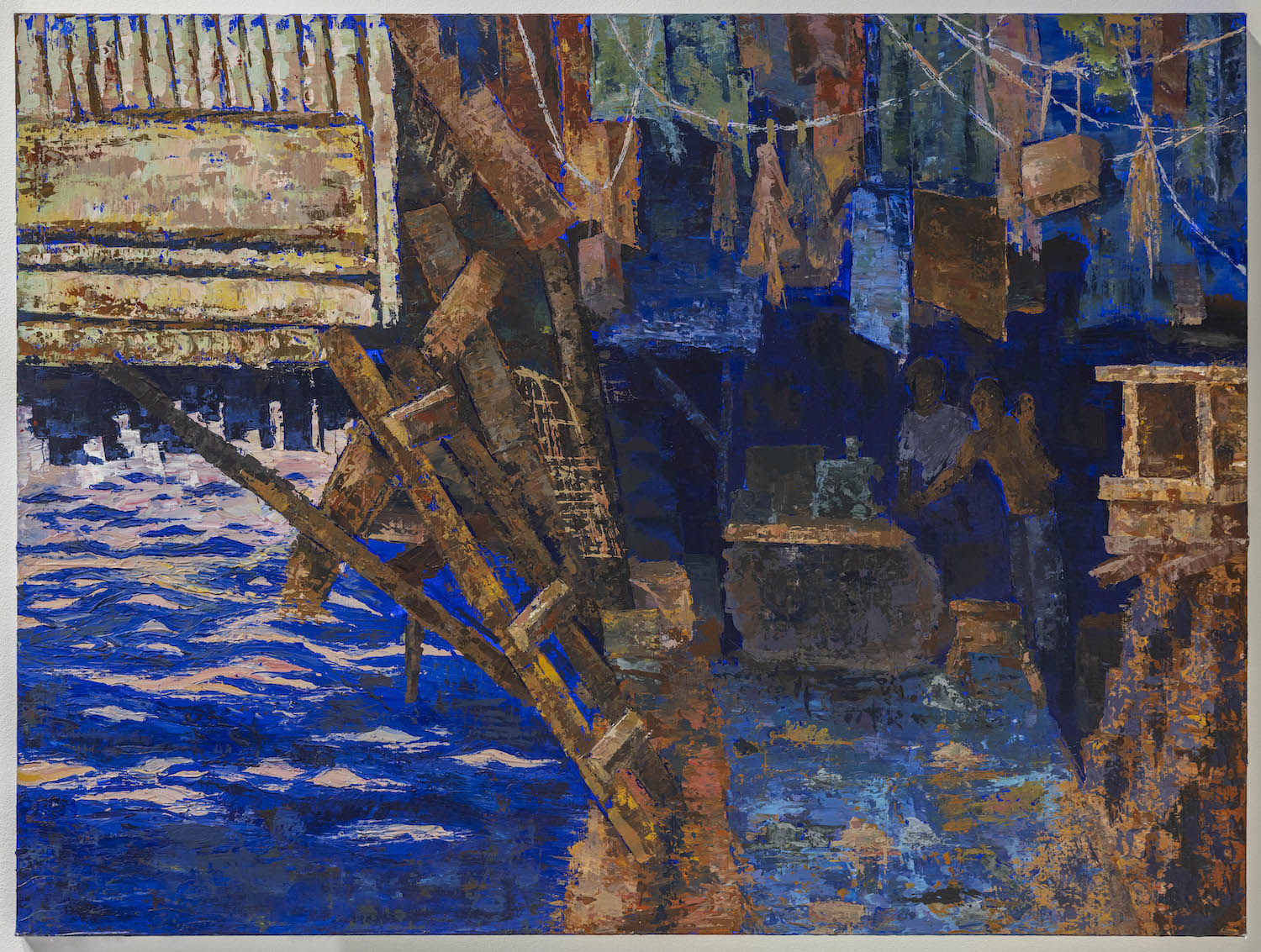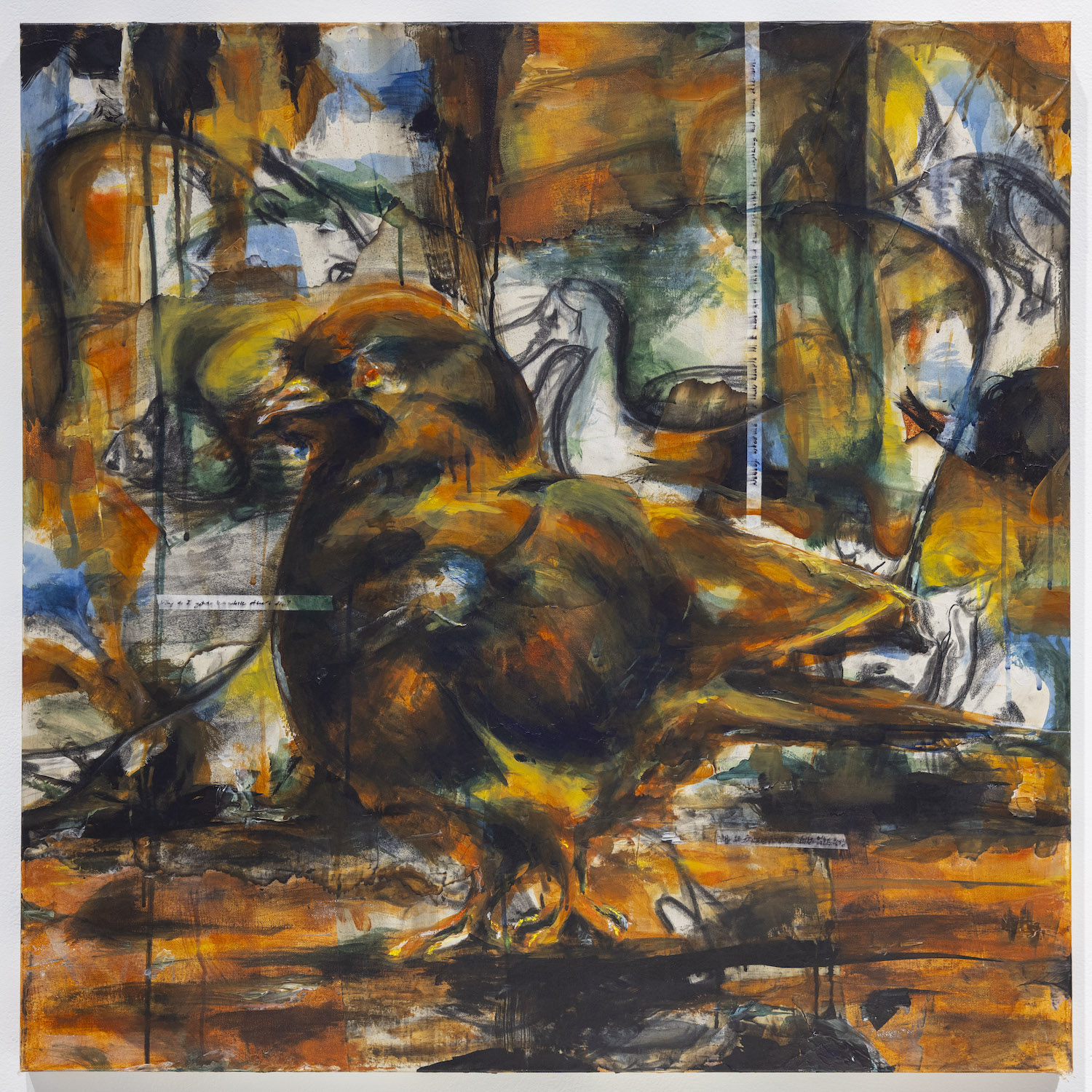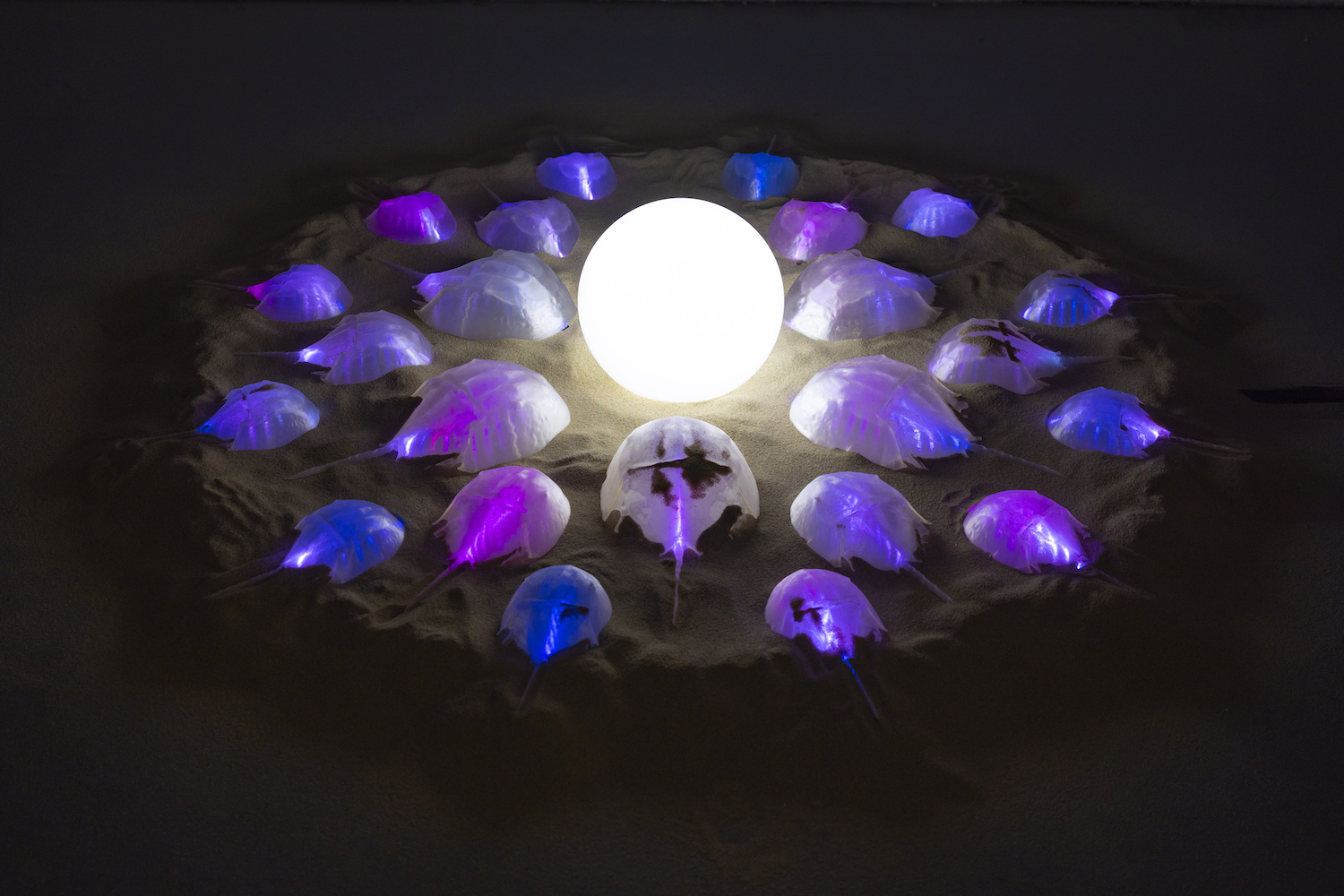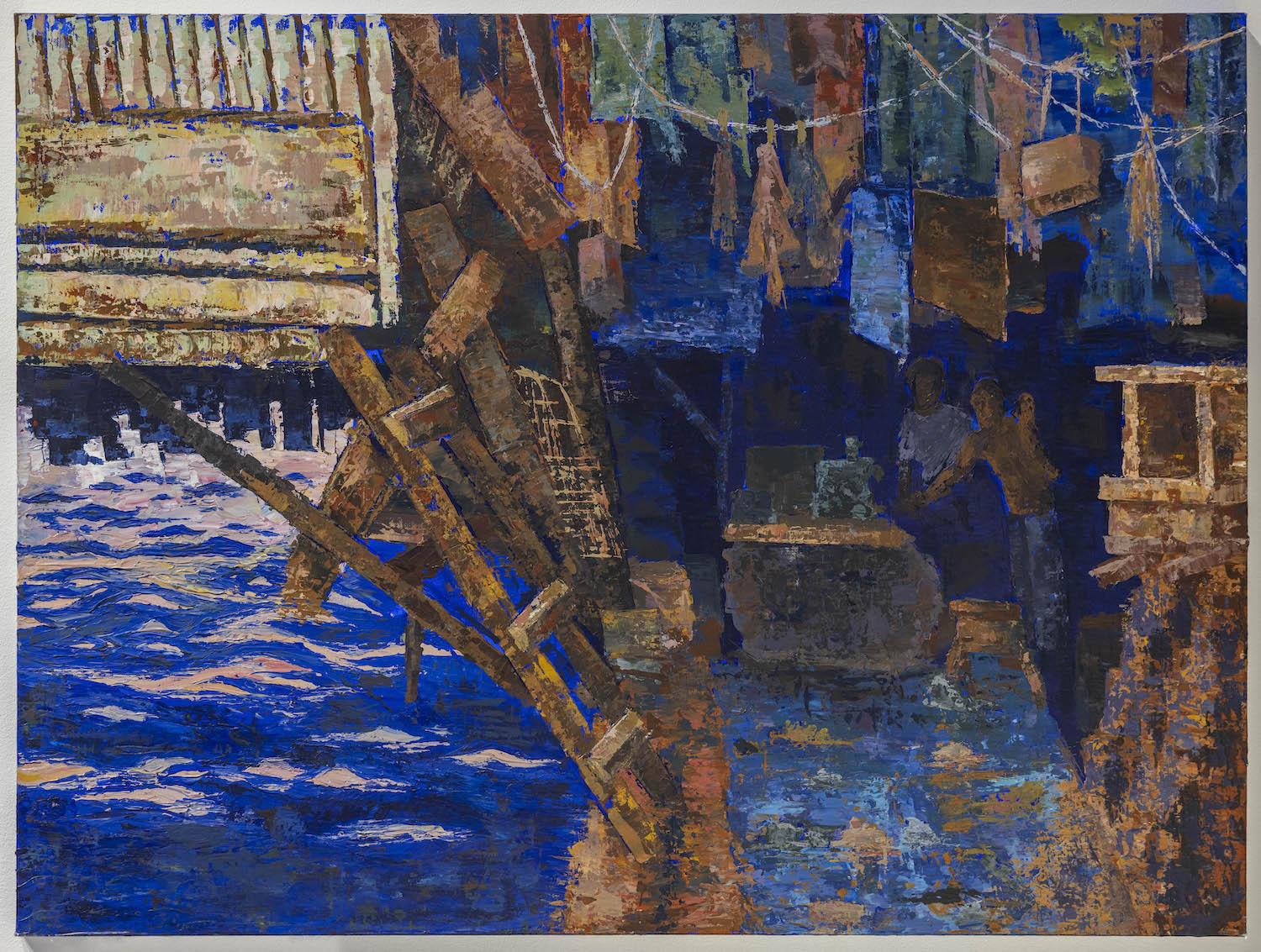2025 Award Winners of the Sadat Arts for Justice and Peace Competition
Arts for All is pleased to announce the student winners of the 2025 Sadat Arts for Justice and Peace Competition. Co-sponsored by the Anwar Sadat Chair for Peace and Development and Arts for All, this competition brings together the Colleges of Behavioral and Social Sciences and Arts and Humanities to showcase the talent of students from art, writing and music programs at the University of Maryland.
This year’s entries were inspired by Greta Thunberg's words: “The fight for social justice is the fight for climate justice. We can’t have one without the other.” The winning pieces creatively highlight the intersection between social and environmental justice through visual art, poetry, music composition and chamber music performance.
We congratulate the winning artists and thank all participants for their inspiring and creative contributions!
ART
First Place, Art Competition

“Happyland”
By Leah Orozco ’25, Computer Science
This acrylic painting depicts the hardships and resilience of the Filipino people living in Tondo, Manila’s largest informal settlement. Nicknamed “Happyland”, residents often live alongside or underneath bridges and freeways. The Philippines is ranked first in the World Risk Index for natural disasters and due to climate change, it is becoming increasingly vulnerable to earthquakes, tsunamis, and other disasters that disproportionately affect impoverished communities. The capital city, Manila, holds 37% of the entire nation’s economy, leading many to seek economic opportunity there. Urban sprawl has taken a heavy toll on Manila, leading to the growth of informal settlements, such as Happyland. Lacking basic necessities and stable housing, these settlements are often devastated by frequent floods, causing residents to rebuild their homes over and over. As a Filipina artist, I not only wish to bring attention to the unseen struggles that Filipinos face, but I hope to highlight the tenacity, strength, and resilience of the Filipino people to get back up and rebuild their lives. The expressive, energetic brushstrokes and saturated colors are meant to convey the dynamic and lived-in nature of this community, as well as reflect their constantly changing environment.
Second Place, Art Competition

“Survivors”
By McCleary Gallagher ’25, Electrical Engineering
In this piece, I explore the role of survivorship from the perspective of a pigeon—a textbook opportunist species—over the backdrop of countless other species lost to extinction. After I lost my childhood home and two cats to an electrical fire, I became wracked by existential guilt: why should I be privileged with life while others received painful and undignified deaths? Today, I can't help but feel a similar guilt as uncountable masses are stripped of their homes, their rights, and their lives while I get to continue my college career. Although the scales of suffering in a house fire and systemic oppression are incomparable, in both, I find myself unscathed when I have no right to be. These debts that I accumulate to the dead are ones I can't repay—is it enough to commit my life to defend and support the living? Is it enough to cherish the dead in memory?
Third Place, Art Competition

“to be guided by the moon”
By Jill McCarthy Stauffer ’25, MFA in Studio Art and Fall 2024 ArtsAMP Graduate Student Research Grant Recipient
"to be guided by the moon" references the mass gathering of horseshoe crabs every late Spring on mid- Atlantic and New England beaches to reproduce. These ancient creatures are attuned to when the moon is either full or new, and use it as their sign to gather, despite the fact that shorelines have changed dramatically in their time on earth. In this installation, digital media is employed to attempt to recreate this ritual, emphasizing the sense of the communal and eternal. The work speculates on what the future of this ancient gathering looks like in an increasingly human altered environment. This artwork is kinetic and is best viewed by video on Youtube.
POETRY
First Place, Poetry Competition
“the ocean cries in Somali”
By Safia Ahmed ’25, Information Science Major and Creative Writing Minor
As a child of the diaspora, whose parents escaped the civil war, the issues affecting my homeland are personal to me. This poem highlights how the pollution of our water, severe droughts and increased violence are intertwined. Oral traditions, such as poetry, are at the core of Somali culture—used to tell the history of my people. Through my writing, I hope to preserve and share the history passed down to me by my parents, continuing our tradition of storytelling.
Second Place, Poetry Competition
“The Way I’ve Been Seeing Things Lately”
By Victoria Chan, Graduate Student in English
COMPOSITION
First Place, Music Composition Competition
“Winds of Centuries” for Brass Quintet
By Sean Klink, ’25 Graduate Student in Composition
My piece for brass quintet, Winds of Centuries (2024), was inspired by the book Listening Point by the American environmentalist and author Sigurd F. Olson. In this book, Olson paints a colorful and arresting picture of finding fulfillment and wonder in nature—becoming lost to the sounds of the world. Up until his death in 1982, Olson was a significant figure in American conservation efforts having helped draft the Wilderness Act of 1964, assisted in establishing Voyageurs National Park, and, his crowing achievement, working with President Jimmy Carter to federally protect the Boundary Waters Canoe Area Wilderness in Northern Minnesota—realized just four years before his death. Olson fought his entire life to protect this land that he cared for so deeply and he used his writing as a way to spread awareness about the pollution, climate change, and habitat loss he experienced happening before him over the course of his life. The title refers to the slow-moving forces which have shaped the earth on unimaginable geologic time-scales. Olson often wrote in awe of the evidence and geologic formations he saw left by the advancement and retreat of glaciers—amazed by the power they had to alter the land over millennia. We are now living in an age where human greed has rapidly pushed the climate past its breaking point and it seems as though there is very little we can do to prevent further damage.
What I aimed to express in this piece is not just the importance of protecting our delicate natural ecosystems, but, historically, how much effort and community organizing has had to be done to protect even a small fraction of it. When we lose public land, we lose a shared culture. With justice for nature comes justice for indigenous people, justice for plants and animals, and justice for everyone who desires to experience this land for themselves. My hope is that this music might in some way allow others to reflect upon their relationship with these shared resources and how the selling of public land for private gain might effect those who depend upon it.
CHAMBER MUSIC ENSEMBLE
First Place, Chamber Music Ensemble Competition
Violin Sonata No. 2
Performed by Anna Kelleher ’25, M.M. in Violin and Eunice Kim ’25, D.M.A. in Piano Performance.
Greta Thunberg and Germaine Tailleferre are examples of influential women in male-dominated fields. Germaine Tailleferre was a prolific composer whose portfolio includes works for piano, small ensemble, chamber orchestra, ballet, and vocal music, while also writing incidental music for theatre,radio, and film. In spite of her lifelong devotion and remarkable talent, critics focused on her gender and appearance rather than her art, comparing her to famous male composers, and leaving her underappreciated even among the male colleagues in Les Six, a cohort of Parisian composers of which she was a central part.
Greta Thunberg’s advocacy has aimed to influence both citizens and global leaders, urging them to act to reverse the effects of human-caused climate change. She became well-known at the young age of 15, which won her both admirers and detractors from every generation. Thunberg has been criticized as being “unstable,” “hysterical,” or “mentally-ill” which are often jabs women experience when blazing a new trail in their fields. Others even criticized her for not being “sexy enough.” Tailleferre’s music was described in her time as “feminine” or “gentle,” which was then seen as a more a pejorative than an endearing quality. Jean Cocteau, who was largely responsible for assembling Les Six, described Tailleferre as “a Marie Laurencin for the ear,” comparing her compositions to Laurencin’s paintings of melancholy women. Yet, in fact Tailleferre’s music embodies power, confidence, and struggle.
Our piece, Violin Sonata No. 2, demonstrates the depth and complexity of her work. While it is a technically difficult piece, it is rewarding in its execution as the diverse harmonies supported by beautiful melodies in each movement inspire both listener and performer alike. We chose to record the second movement, Adagietto, which evokes contemplative emotion and lyrical grace. Its intricacies reveal the composer’s struggle, strength, and individuality, expressed through its groundbreaking form. It is for this reason that we feel that this piece fits this year's Sadat Prize theme of social justice as an example of the tenacity in powerful women like Thunberg and Tailleferre.
Second Place, Chamber Music Ensemble Competition
“Freaks of Nature” by Kimberly Osberg
Performed by Kat Robinson ’25, D.M.A. in Horn Performance and an ensemble of UMD School of Music alumni.
Commissioned by the premiere’s performers (Kat, Nat, and Jimmy) Kimberly Osberg’s Freaks of Nature is about unique animals that are labeled as weird or strange, or even as “freaks” due to their fantastic abilities, adaptations, and appearances. This three movement work written for clarinet, horn and bassoon was designed to bring awareness to species that are endangered due to human-caused damage to their habitats. The first movement features the Iron-Clad Volcano Snail. Found in the deep-sea hydrothermal-vents within the Indian Ocean, it has the unique adaptation of containing mineralized iron in its body and shell that acts as armor to protect it from searing 750-degree Fahrenheit temperatures. It is the only animal species with this adaptation and sadly it is endangered due to deep-sea mining wrecking its natural habitat. The second movement features the Huntsman Spider. Native to Australia, they are the size of a large dinner plate (10-12” leg span) who hunt for prey instead of catching it in webs. While their appearance may be terrifying, they are actually friendly spiders because they eat other venomous spiders and other unwanted pests. They are endangered due deforestation from the expanding urban sprawl of cities into the wilderness. The final movement is named for the Giant Golden-Crowned Flying Fox; which is not a fox but actually a massive bat with a 5-foot wingspan. These huge bats the size of a human child are native to the Philippines, but thankfully they are frugivores that thrive on fruits, roots, shoots, nuts and seeds. They are endangered due to poaching and deforestation and often harassed by human tourists who disturb them during the day. By bringing awareness of the impacts that humans have on these unique animals, we hope to bring a new perspective of the plight placed upon them as our world continues to change due to the impacts of mankind and climate change.

